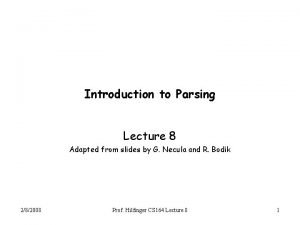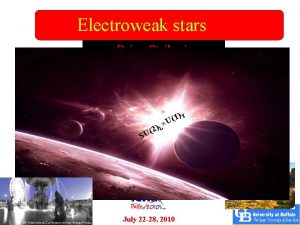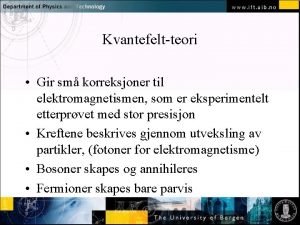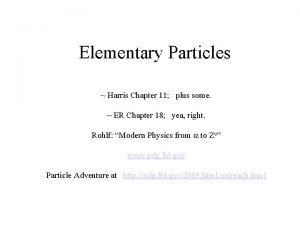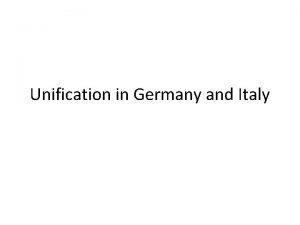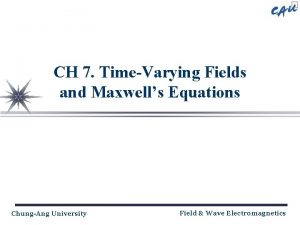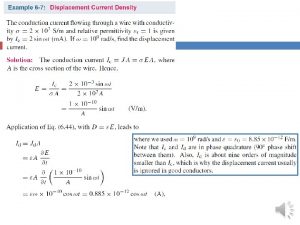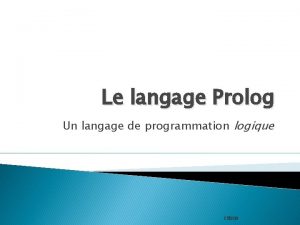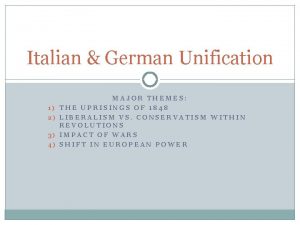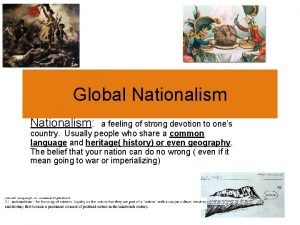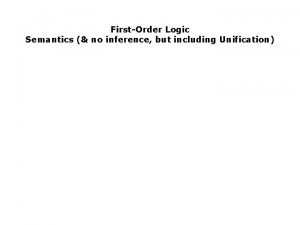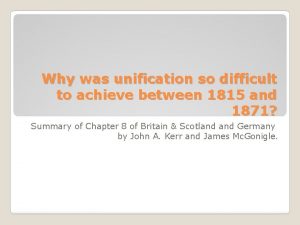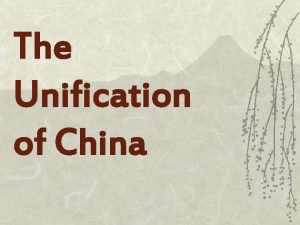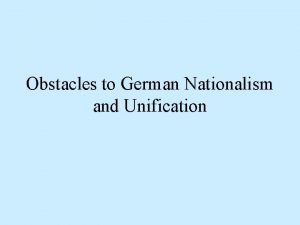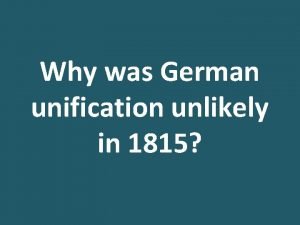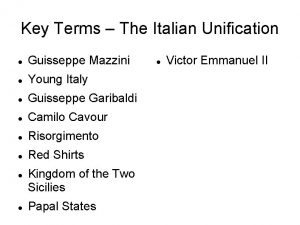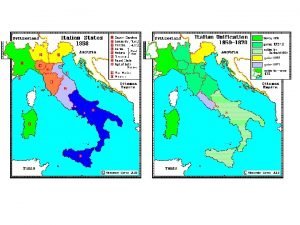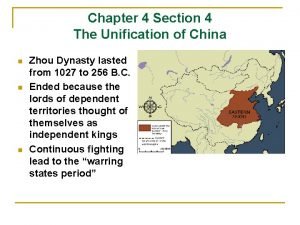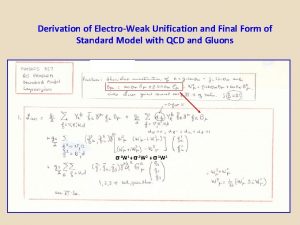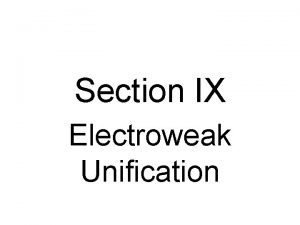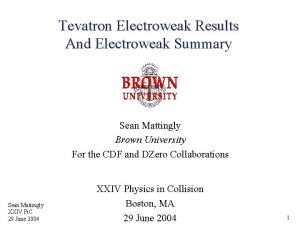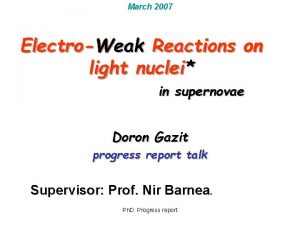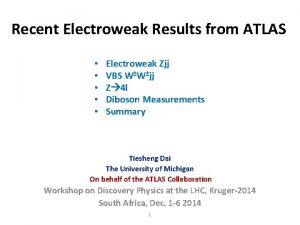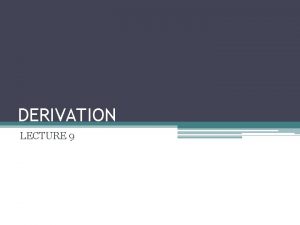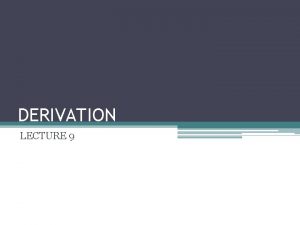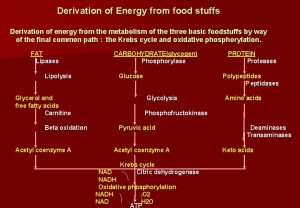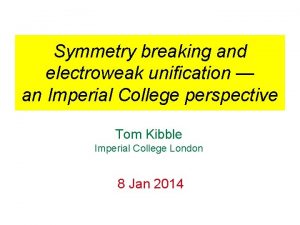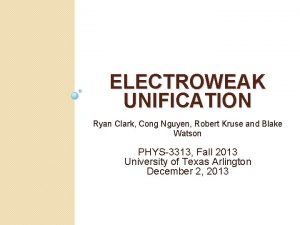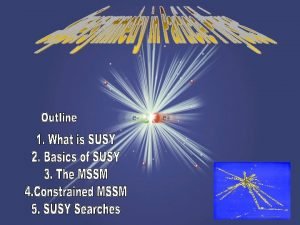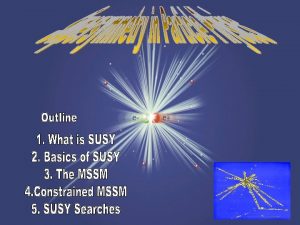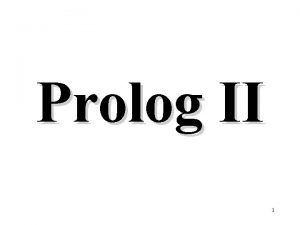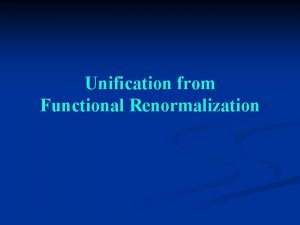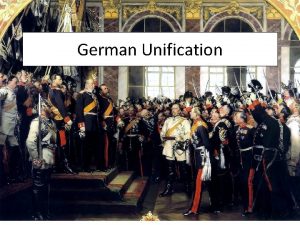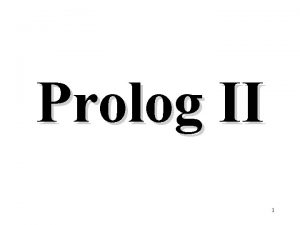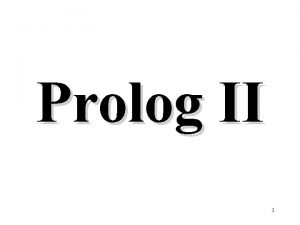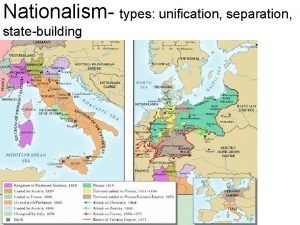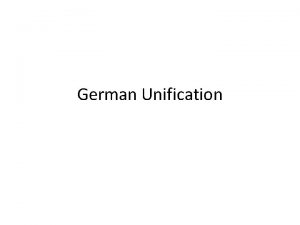Derivation of ElectroWeak Unification and Final Form of






























![y 0 and the k are linearly independent so [ …] = 0 and y 0 and the k are linearly independent so [ …] = 0 and](https://slidetodoc.com/presentation_image_h2/4ea5fdcdb8974533fa8098fd5e9a869a/image-31.jpg)

- Slides: 32

Derivation of Electro-Weak Unification and Final Form of Standard Model with QCD and Gluons 1 W 1+ 2 W 2 + 3 W 3

Substitute B = cos W A + sin W Z 0 Sum over first generation particles. up down text error Left handed only text error Flavor up Flavor down Flavor changing interactions.

Weak interaction terms flavor changing: leptons flavor changing: quarks

We want the coefficient for the electron-photon term to be -e f = 0 for neutrino and = 1 for others A -e A Z 0

Consider only the A term: R ea 1 ea 2 gives agreement with experiment. Cf = 2 T 3 = -1

The following values for the constants give the correct charge for all the particles.

Coefficients for the Z 0 term g 1 = g 2 sin W/cos W Y f. L = 2 [ Q f – T 3 ] f Y f. R = 2 Q f Z 0 Cf cos W = 2 T 3 [1 -sin 2 W]/ cos W = -1

Final Form for Electro-Weak Interaction Terms (the QCD terms have yet to be written in terms of the color/anti-color gluons) A Z 0 In the text by Gordon Kane, p. 92, Eq. 7. 32, there appears to be a typo in the sign of the third term.

The Standard Model Interaction Lagrangian for the 1 st generation (E & M) QED interactions weak neutral current interactions - weak flavor changing interactions + QCD color interactions

Weak neutral current interactions Z 0 note: no flavor changes Z 0

Weak charged flavor changing interactions quarks leptons -g 2

Quantum Chromodynamics (QCD): color forces Only non-zero components of contribute.

To find the final form of the QCD terms, we rewrite the above sum, collecting similar quark “color” combinations.

The QCD interaction Lagrangian density

Note that there are only 8 possibilities: grrg-g ggb- The red, anti-green gluon The green, anti-blue gluon

The gluon forces hold the proton together proton At any time the proton is color neutral. That is, it contains one red, one blue and one green quark.

beta decay u u d d d u W- neutron W doesn’t see color proton

decay of - -u d -

W production from p p- d u u -d -u -u W+ ppp--

The nuclear force u n u d d d u u p W- p u d d d u u Note that W- d + u- = - In older theories, one would consider rather the exchange of a - between the n and p. n


Cross sections and Feynman diagrams everything happens here transition probability amplitude must sum over all possible Feynman diagram amplitudes with the same initial and final states.


Feynman rules applied to a 2 -vertex electron positron scattering diagram Note that each vertex is generated by the interaction Lagrangian density. time spin metric tensor Mfi = left vertex function coupling constant – one for each vertex right vertex function propagator The next steps are to do the sum over and carry out the matrix multiplications. Note that is a 4 x 4 matrix and the spinors are 4 -component vectors. The result is a a function of the momenta only, and the four spin (helicity) states.

Confinement of quarks free quark terms free gluon terms quark- gluon interactions The free gluon terms have products of 2, 3 and 4 gluon field operators. These terms lead to the interaction of gluons with other gluons.

G normal free gluon term Nf= # flavors G Note sign 3 -gluon vertex Nc= # colors Nf quark loop Nc gluon loop

The terms given explicitly in M are only those loops shown in the previous diagram. Higher order terms are indicated by “ + … “ momentum squared of exchanged gluon Nf Nc M 2 quark Nf Nc -7 In QED one has no terms corresponding to the number of colors (the 3 -gluon) vertex. This term has a negative sign.

Quark confinement arises from the increasing strength of the interaction at long range. At short range the gluon force is weak; at long range it is strong. This confinement arises from the SU(3) symmetry – with it’s non-commuting (non-abelian) group elements. This non-commuting property generates terms in the Lagrangian density which produce 3 -gluon vertices – and gluon loops in the exchanged gluon “propagator”.

Conditions on the SU(2) Gauge Particle Fields which complete the Invariance of the Lagrangian Density

We want to find W such that the following is satisfied: D’ ’ = D’ [ei /2 ] = ei /2 D cancel =
![y 0 and the k are linearly independent so 0 and y 0 and the k are linearly independent so [ …] = 0 and](https://slidetodoc.com/presentation_image_h2/4ea5fdcdb8974533fa8098fd5e9a869a/image-31.jpg)
y 0 and the k are linearly independent so [ …] = 0 and the following is the expression for W

The Higgs Lagrangian Contribution
 Leftmost derivation and rightmost derivation
Leftmost derivation and rightmost derivation Dejan stojkovic
Dejan stojkovic Standard model
Standard model Electroweak interaction
Electroweak interaction Electroweak interaction
Electroweak interaction German and italian unification compare and contrast
German and italian unification compare and contrast Chapter 23 lesson 3 nationalism unification and reform
Chapter 23 lesson 3 nationalism unification and reform National unification and the national state
National unification and the national state Derivation of maxwell's equations in differential form
Derivation of maxwell's equations in differential form Derivation of maxwell's equations in differential form
Derivation of maxwell's equations in differential form Prolog langage
Prolog langage Reapolitik
Reapolitik What was the most serious obstacle to german unification?
What was the most serious obstacle to german unification? Germany before unification
Germany before unification Germany before unification
Germany before unification St an
St an Unification operating model
Unification operating model First order logic unification
First order logic unification Germany before unification
Germany before unification Why was italian unification difficult to achieve
Why was italian unification difficult to achieve Unification of china
Unification of china Prolog unification
Prolog unification Obstacles to german unification
Obstacles to german unification Unification algorithm example
Unification algorithm example Germany before 1871
Germany before 1871 Gauge coupling unification
Gauge coupling unification Obstacles to italian unification
Obstacles to italian unification Unification of italy class 10
Unification of italy class 10 Italian risorgimento timeline
Italian risorgimento timeline Stages of german unification
Stages of german unification The unification of china
The unification of china Present continuous affirmative negative interrogative
Present continuous affirmative negative interrogative Electro final form
Electro final form
